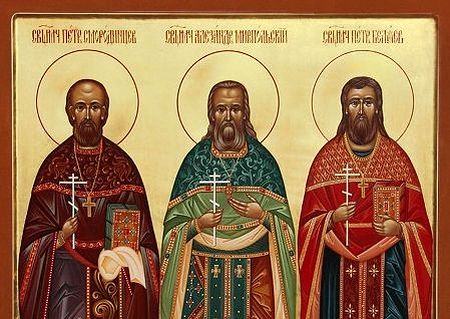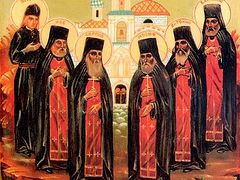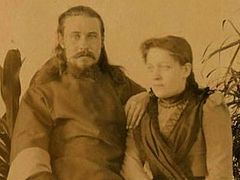Chelyabinsk, Russia, April 6, 2020
Over the past 30 years, a number of ascetics of faith associated with the Southern Urals have been canonized by the Russian Church. Now, in addition to their own feasts, they will also be celebrated in the newly-established feast of the Synaxis of All Saints of Chelyabinsk.
The new feast will be celebrated annually in October, reports the press service of the Chelyabinsk Metropolia.
“Such feasts exist in many metropolias. And now there is a day for the conciliar veneration of the saints that labored in the Chelyabinsk lands. It will be a feast that we will celebrate with special joy and solemnity,” commented His Eminence Metropolitan Gregory of Chelyabinsk and Miass.
The Synaxis currently includes 6 saints, though more will be added in the future, Met. Gregory added.
At a meeting of the Bishops’ Council of the Chelyabinsk Metropolia on February 20, it was decided to appeal to His Holiness Patriarch Kirill for a blessing to celebrate his feast. With his primatial blessing, the Synaxis includes:
-
Hieromartyr Alexander Miropolsky, priest (1918)
-
Hieromartyr Pavel Sokolov, priest (1918)
-
Martyr Paraskeva Koncheva (1939)
-
Hieromartyr Peter, Metropolitan of Krutitsa (1937)
-
Hieromartyr Peter Belyaev, priest (1918)
-
Hieromartyr Peter Smorodintsev, priest (1918)
The celebration of the Synaxis is tied to the day of St. Peter of Krutitsa, who was shot on October 10. If his feast day falls on a Sunday, the Synaxis will also be celebrated, otherwise it will be transferred to the next Sunday after October 10. In years when the following Sunday would coincide with the feast of the Protection of the Mother of God on October 14, the Synaxis will be transferred to the preceding Sunday, on October 7.
***
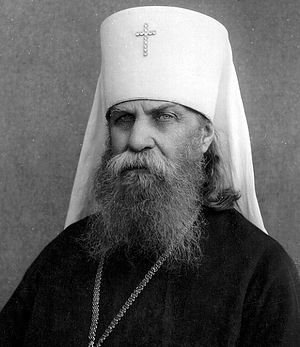 Hieromartyr Peter, Metropolitan of Krutitsa. Photo: mitropolia74.ru Hieromartyr Peter of Krutitsa (1862-1937) labored at various Church administration positions before the revolution, being ordained as a bishop only in 1920. He was a close companion of Patriarch St. Tikhon, and after his death, he became the Patriarchal Locum Tenens. He was arrested in December 1925, and spent the rest of his life in exile and in prisons, including in Chelyabinsk. He was shot on October 10, 1937.
Hieromartyr Peter, Metropolitan of Krutitsa. Photo: mitropolia74.ru Hieromartyr Peter of Krutitsa (1862-1937) labored at various Church administration positions before the revolution, being ordained as a bishop only in 1920. He was a close companion of Patriarch St. Tikhon, and after his death, he became the Patriarchal Locum Tenens. He was arrested in December 1925, and spent the rest of his life in exile and in prisons, including in Chelyabinsk. He was shot on October 10, 1937.
Hieromartyr Alexander Miropolsky (1843-1918) served in Kazan, and in the Ekaterinburg Diocese beginning in 1910. He was a famous missionary, converting many Tatars and Bashkirs to holy Orthodoxy. He was killed by the reds on the night of July 5-6, 1918.
Hieromartyr Peter Belyaev (1875-1918) was a graduate of the Vladimir Theological Seminary. He served in Kasli beginning in 1904, teaching the Law of God at the local two-year school. He was shot by the reds without a trial on June 17, 1918. He was buried behind the altar of the Holy Dormition Church in Kasli.
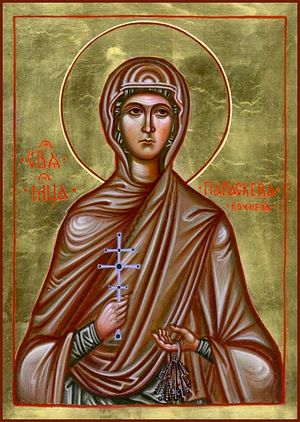 Martyr Paraskeva Koncheva. Photo: mitropolia74.ru Hieromartyr Peter Smorodintsev (1866-1918) was from a priest’s family. He served as a reader and deacon for many years, becoming a priest at 42 yeas old. He served in the Chelyabinsk Province from 1908 to 1918, being arrested after the arrival of the reds. He was shot together with Archpriest Alexander Miropolsky and was also buried behind the altar of the Holy Dormition Church in Kasli.
Martyr Paraskeva Koncheva. Photo: mitropolia74.ru Hieromartyr Peter Smorodintsev (1866-1918) was from a priest’s family. He served as a reader and deacon for many years, becoming a priest at 42 yeas old. He served in the Chelyabinsk Province from 1908 to 1918, being arrested after the arrival of the reds. He was shot together with Archpriest Alexander Miropolsky and was also buried behind the altar of the Holy Dormition Church in Kasli.
Hieromartyr Pavel Sokolov (1874-1918) was a graduate of the Kaluga Theological Seminary. He served in Nyzaepetrovsk from 1900 to 1911, teaching the Law of God and supervising the parochial schools. He later served in the city of Kungur, where he was shot by the Bolsheviks on June 20, 1918.
Martyr Paraskeva Koncheva (1890-1939) was born in a peasant family in the village of Koncheva in the Chelyabinsk Province. During the years of persecution, she tried to prevent the closure of the St. Alexander Nevsky Church in Miass. She gave a rare example of courage in defending her right to confess the holy Orthodox faith. In 1937, she traveled to Moscow to apply for a priest to replace the one who had been arrested. When she tried to return home, she was arrested at the Kazan Railway Station. She was sentenced to 10 years in the camps. She reposed in the Baikal-Amurc camp from a severe injury on April 8, 1939.

